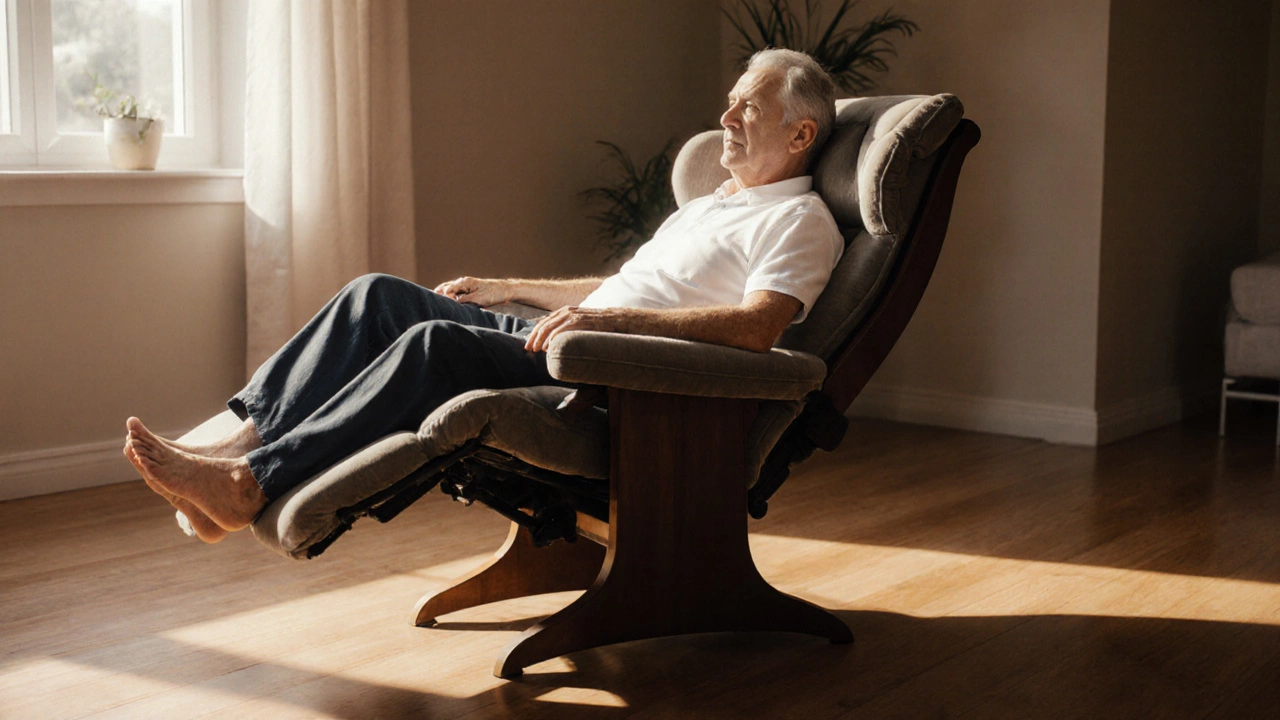Ergonomic Recliner – The Perfect Blend of Comfort and Support
When looking for ergonomic recliner, a chair designed to promote healthy posture while you relax. Also known as comfort recliner, it merges ergonomics principles with reclining mechanics. In simple terms, an ergonomic recliner is built to keep your spine aligned, reduce pressure points, and let you unwind without the aches that come from ordinary chairs.
Most people think of a recliner as a plush seat that leans back, but an ergonomic version adds science to the softness. It includes features like adjustable lumbar support, which lets you raise or lower the lower‑back pad to match the curve of your lumbar spine. When the support is set correctly, it distributes weight evenly and cuts down on lower‑back strain during long movie marathons or work‑from‑home days.
Key Features That Make It Truly Ergonomic
The biggest game‑changer is the integration of ergonomic recliner technology with user‑friendly controls. A power recliner uses a quiet motor to move the backrest and footrest at the touch of a button, removing the effort required by manual levers. This convenience matters for seniors, people with limited mobility, and anyone who wants a smooth transition from sitting to lying down.
Beyond power, look for memory‑foam cushions that adapt to your body shape, breathable upholstery that wicks away sweat, and a sturdy frame made from hardwood or reinforced steel. These attributes together create a chair that feels customized each time you sit down, even though it’s the same piece of furniture.
Another often‑overlooked element is the angle of the footrest. A well‑designed ergonomic recliner lets the footrest rise to a height that keeps your knees at roughly a 90‑degree angle, which is the sweet spot for circulation. If the footrest sits too low, blood can pool in the lower legs; too high, and you strain your hamstrings.
Materials matter, too. Bamboo‑based fabrics or recycled polyester blends echo the sustainability ethos of Bamboo Tiger Furniture Store, giving you a chair that’s both eco‑friendly and durable. Eco‑conscious buyers appreciate that these fabrics resist wear while reducing the carbon footprint of production.
When placing the recliner in a living room, consider traffic flow. Because the seat swings forward and backward, you’ll want at least 90 cm of clearance behind it and 60 cm on the sides. This spacing prevents accidental bumps and lets you enjoy the full range of motion without crowding other furniture.
Health‑wise, an ergonomic recliner can also aid recovery after a long day on your feet. The adjustable lumbar pad supports the spine’s natural curve, while the recline angle helps relieve pressure on the intervertebral discs. Some models even feature heat‑therapy pads or built‑in massagers, turning the chair into a mini‑rehab station.
From a style perspective, modern ergonomic recliners come in sleek low‑profile silhouettes that fit contemporary décor, as well as classic tufted designs for a more traditional look. Choose a finish that complements your existing colour palette—neutral greys, deep blues, or even a daring tiger‑print accent if you’re feeling bold.
If you’re budgeting, remember that the price correlates with the level of adjustability and material quality. A basic manual recliner may cost under £200, while a top‑tier power model with premium upholstery can exceed £1,500. Think about which features you truly need—lumbar adjustment, power, heating—and prioritize accordingly.
Maintenance is straightforward. Most removable cushion covers are machine‑washable, and a quick wipe‑down with a mild cleaner keeps the frame looking fresh. For power recliners, a yearly check of the motor and wiring ensures smooth operation and extends the chair’s lifespan.
Finally, test the chair before buying if possible. Sit for at least five minutes, adjust the lumbar support, try the footrest, and make sure the controls feel intuitive. A chair that fits your body today will continue to support you for years.
Below you’ll find a curated collection of articles that dive deeper into buying guides, price ranges, styling tips, and maintenance tricks—all focused on getting the most out of your ergonomic recliner. Whether you’re a first‑time buyer or looking to upgrade, these resources will help you make an informed choice.
How to Sit Healthy in a Recliner: Ergonomic Tips for Better Posture
Learn how to set up a recliner for optimal posture, lumbar support, and circulation. Follow step‑by‑step tips, choose the right model, and avoid common mistakes for a healthier sitting experience.
View more